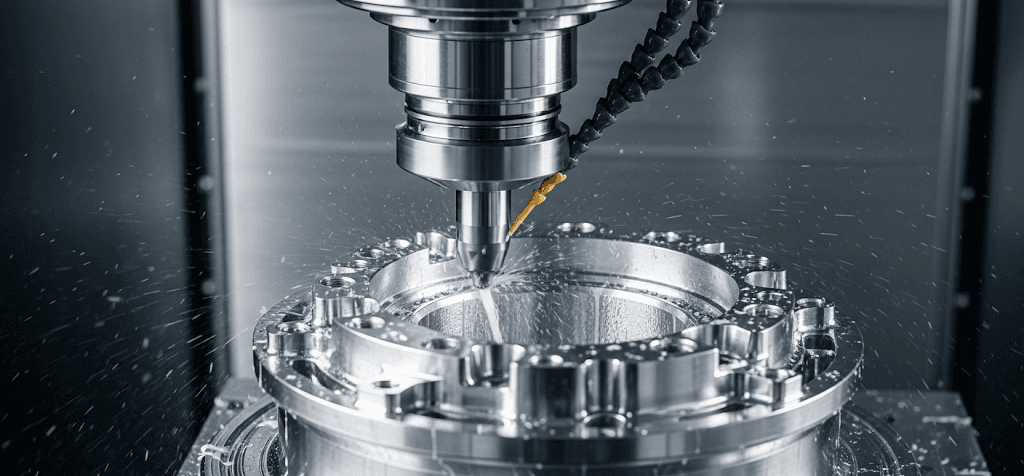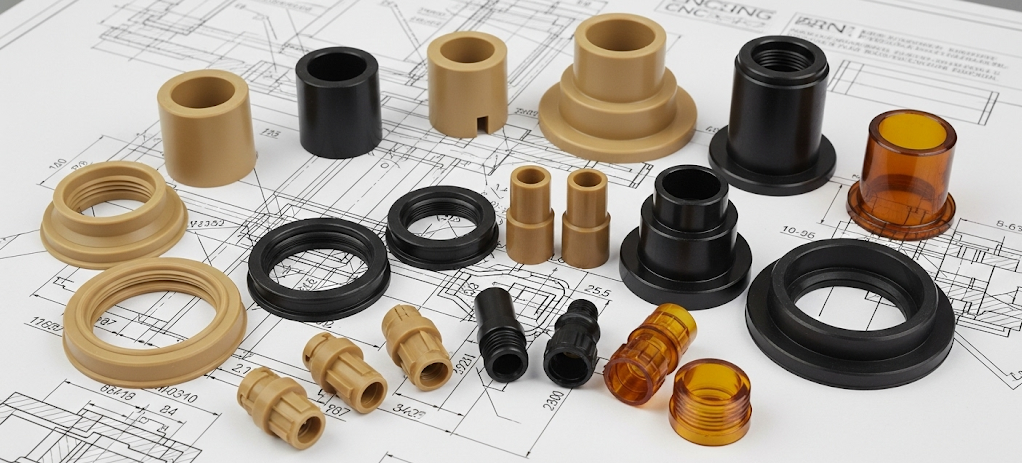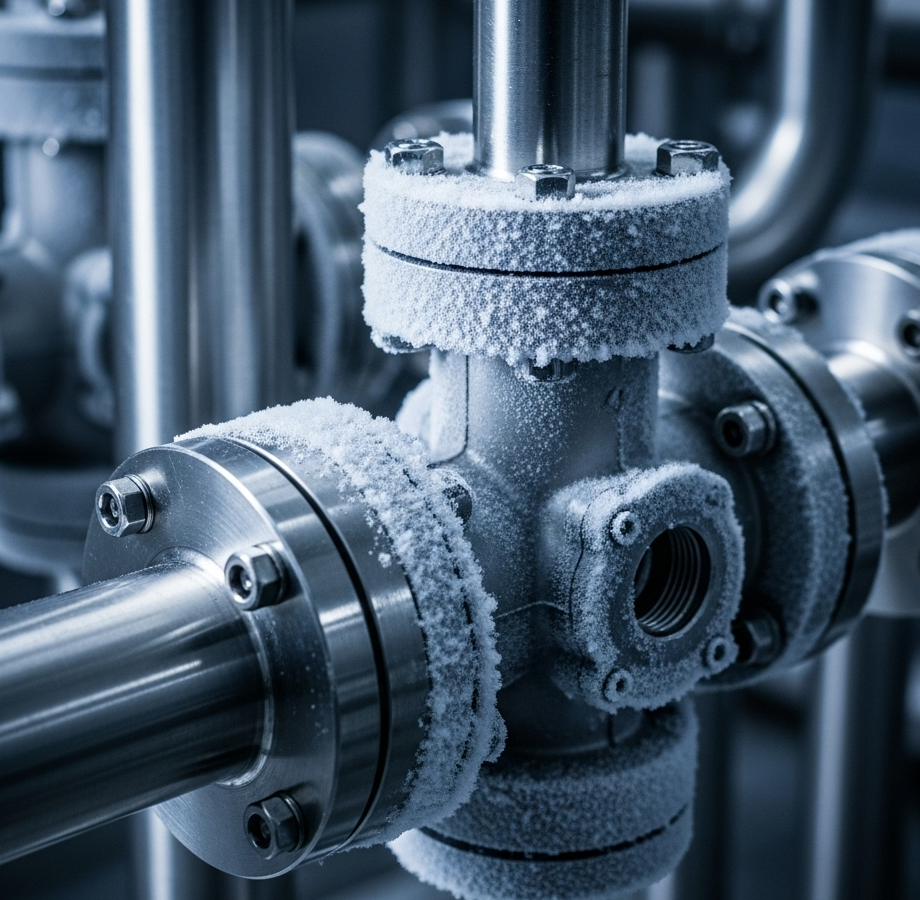Your component operates in a jet engine turbine or a cryogenic fuel system, and failure is not an option. You’ve designed the perfect part, but selecting the wrong material means it could warp, crack, or lose all structural integrity when faced with intense heat or deep cold.
This critical decision often feels like navigating a minefield of trade-offs. A material that withstands heat might be impossible to machine economically, while one that stays tough in the cold might be too heavy. Making the wrong choice leads to catastrophic failures, costly redesigns, and significant project setbacks in your CNC machining journey.
The key to success is pairing the demanding application with a material whose properties are proven to perform under thermal stress. From nickel superalloys to advanced engineering plastics, a select group of materials can be precision-machined to create robust parts that conquer the most extreme temperature environments.
For extreme temperature applications, the best CNC machining materials include high-temperature superalloys like Inconel and Titanium, which retain strength above 1000°C. Advanced polymers such as PEEK and Vespel offer excellent performance up to 300°C with chemical resistance. For cryogenic (low-temperature) conditions, austenitic stainless steels (e.g., 304, 316) and certain titanium alloys are ideal, as they remain tough and ductile without becoming brittle. Machinable ceramics like Boron Nitride provide extreme thermal insulation.
Choosing the right material is therefore the cornerstone of reliable performance in thermally demanding situations. Consequently, this choice influences not only the part’s functional lifespan but also the entire approach to the CNC milling or CNC turning process itself. Understanding the unique characteristics of these specialized materials is essential for engineers and designers. Furthermore, this guide provides a detailed overview to help you select the optimal material for your high or low-temperature application, ensuring success with your manufacturing partner, ly-machining.

The Crucial Role of Thermal Properties in CNC Machining Design
Beyond Strength: Why Thermal Expansion Matters
When designing a part for extreme temperatures, mechanical strength is only half the story. The Coefficient of Thermal Expansion (CTE) is a critical property that dictates how much a material expands when heated or contracts when cooled. A high CTE can cause a precisely machined part to go out of tolerance, seize up against mating components, or create immense internal stress.
For assemblies made of different materials, matching CTEs is vital to prevent failure. A low and predictable CTE is a hallmark of a superior material for extreme temperature applications. During the CNC machining process, our engineers at ly-machining account for these properties to ensure the final part is dimensionally accurate at its intended operating temperature.
Thermal Conductivity: Managing the Heat
Thermal conductivity is a measure of how effectively a material transfers heat. In some applications, you need to dissipate heat quickly (high conductivity), like in a heat sink. In others, you need to insulate against it (low conductivity), like in a thermal barrier.
This property also profoundly impacts the CNC milling and CNC turning process. Materials with low thermal conductivity, like Inconel and Titanium, don’t draw heat away from the cutting tool. This concentrates heat at the tool tip, causing rapid tool wear and work-hardening of the material surface, requiring specialized machining strategies.
High-Temperature Champions: Metals and Superalloys
When temperatures soar above 500°C (932°F), only a specialized group of metals and superalloys can maintain their structural integrity. These materials are the backbone of the aerospace, power generation, and automotive industries.

Inconel: The King of Heat
Inconel is a family of nickel-chromium-based superalloys renowned for its extraordinary performance at elevated temperatures. It forms a stable, passivating oxide layer that protects it from heat and corrosion, even under extreme pressure.
- Service Temperature: Can maintain significant strength at temperatures up to 1095°C (2000°F) for certain grades like Inconel 625 and 718.
- Key Features: Excellent resistance to oxidation and corrosion, high tensile strength, and resistance to creep (the tendency to slowly deform over time under stress).
- CNC Machining: Notoriously difficult. Its high strength and rapid work-hardening tendencies require low cutting speeds, high-power machinery, and specialized tooling.
- Applications: Jet engine components (turbine blades, exhaust systems), nuclear reactors, and high-performance automotive exhausts.
Titanium: The Lightweight Powerhouse
Titanium offers an exceptional strength-to-weight ratio, making it a go-to material when reducing mass is as important as heat resistance. While not as resistant to extreme heat as Inconel, its performance envelope is impressive.
- Service Temperature: Can operate continuously up to about 600°C (1112°F) before its properties begin to significantly degrade.
- Key Features: Roughly half the weight of steel with comparable strength, excellent corrosion resistance (especially against chlorides), and biocompatibility.
- CNC Machining: Challenging due to its low thermal conductivity and tendency to gall (adhere to the cutting tool). Requires sharp tools, high coolant flow, and specific feed and speed rates in both CNC turning and milling.
- Applications: Aircraft airframes and engine components, landing gear, military hardware, and medical implants.
High-Temperature Stainless Steels
Certain grades of stainless steel are formulated to provide reliable service in high-temperature, corrosive environments at a lower cost than superalloys.
- Service Temperature: Austenitic grades like 310S and 309S can operate continuously at up to 1150°C (2100°F) and 1095°C (2000°F) respectively, excelling in oxidation resistance.
- Key Features: Good corrosion resistance, readily available, and more cost-effective than nickel superalloys.
- CNC Machining: Generally easier to machine than Inconel or Titanium, though work-hardening can still be a factor. Standard machining practices are often sufficient.
- Applications: Furnace parts, heat exchangers, kiln linings, and exhaust components.
Comparative Table: High-Temperature Metals
| Material | Max Continuous Service Temp. | Key Advantage | CNC Machining Difficulty |
| Inconel 718 | ~700°C (1300°F) | Extreme strength at high temps | Very High |
| Titanium (Ti-6Al-4V) | ~400°C (750°F) | High strength-to-weight ratio | High |
| Stainless Steel 310S | ~1150°C (2100°F) | Excellent oxidation resistance | Moderate |
Advanced Polymers for Thermal Challenges
High-performance engineering plastics have revolutionized product design, offering alternatives to metal in many high-temperature applications. They provide unique benefits like electrical insulation, chemical inertness, and self-lubricating properties.

PEEK (Polyetheretherketone)
PEEK is a semi-crystalline thermoplastic with a remarkable combination of mechanical strength, chemical resistance, and thermal stability.
- Service Temperature: Continuous operating temperature of up to 260°C (500°F).
- Key Features: Excellent wear and fatigue resistance, low moisture absorption, high purity, and resistance to harsh chemicals and steam.
- CNC Machining: Highly machinable. Its stability allows for tight tolerances during CNC turning and milling operations, making it a favorite for precision components.
- Applications: Medical implants, aerospace components, seals and bearings in the oil & gas industry, and semiconductor manufacturing.
Vespel® (Polyimide)
Vespel is a polyimide-based plastic that excels in applications with high heat and high friction, often outperforming PEEK in the most demanding wear scenarios.
- Service Temperature: Can operate continuously up to 288°C (550°F) and withstand short-term spikes up to 482°C (900°F).
- Key Features: Superior wear resistance, extremely low friction (can often be used without lubrication), and does not outgas in a vacuum.
- CNC Machining: Readily machinable with standard tooling, allowing for the creation of complex parts with a fine surface finish.
- Applications: High-performance seals, bearings, and thrust washers in aerospace and automotive transmissions; insulator components in plasma torches.
Conquering the Cold: Materials for Cryogenic Applications
When temperatures plummet to cryogenic levels (-150°C to -273°C), many materials become extremely brittle and can shatter on impact. Only certain materials retain their ductility and toughness in these deep-freeze conditions.

Austenitic Stainless Steels (300 Series)
The most common choice for cryogenic applications. The nickel content in austenitic grades like 304 and 316 prevents the brittle transformation that other steels undergo at low temperatures.
- Key Features: Remain tough and ductile even at liquid nitrogen temperatures (-196°C / -320°F). They actually increase in tensile strength as they get colder.
- Applications: LNG (liquefied natural gas) storage and transport, cryogenic piping and valves, and scientific research equipment.
Titanium and Certain Aluminum Alloys
Titanium maintains good strength and fracture toughness at cryogenic temperatures. Similarly, certain aluminum alloys, like the 5000 series (e.g., 5083), are also well-suited for low-temperature use, offering a lightweight alternative to stainless steel.
- Key Features: Both remain ductile without a distinct brittle-fracture transition point, making them reliable for aerospace applications involving cryogenic fuels.
- Applications: Cryogenic fuel tanks for rockets and spacecraft, support structures in superconducting magnets.
Related Questions
How does thermal cycling affect material choice?
Thermal cycling—repeatedly heating and cooling a part—can cause fatigue and failure, especially if the material has a high CTE. Materials like Macor® (a machinable glass-ceramic) and certain titanium alloys perform well under thermal cycling because of their low thermal expansion and stability across a wide temperature range. It is a critical factor we assess at ly-machining when recommending materials.
What are machinable ceramics and where are they used?
Machinable ceramics, such as Boron Nitride and Macor®, are engineered to be shaped using standard CNC machining tools. Unlike traditional brittle ceramics, they can be milled, turned, and drilled to precise tolerances. They offer extreme temperature resistance (often over 1000°C) and excellent electrical insulation, making them ideal for high-voltage insulators, vacuum furnace fixtures, and welding nozzles.
Frequently Asked Questions (FAQs)
1. Is it more expensive to have parts CNC machined from high-temperature materials?
Yes, typically it is. The raw materials themselves, like Inconel or Vespel, are significantly more expensive than standard steels or aluminum. Additionally, the CNC machining process is often slower and requires more robust, expensive tooling due to the material’s toughness and work-hardening properties. This combination increases the overall cost per part.
2. My design requires a tight tolerance. How does temperature affect this?
Temperature can be a major challenge for tight tolerances. A part machined to perfection at room temperature (e.g., 20°C) will change size at its operating temperature. When you partner with ly-machining, we discuss the part’s end-use environment. We can adjust the CNC programming to machine the part slightly out of spec at room temperature, so it becomes perfectly dimensioned once it reaches its high or low operating temperature.
3. Does the ISO 2768-mk standard apply to these specialty materials?
Yes, the principles of ISO 2768-mk, which define general tolerances for linear and geometric features, can and should be applied to drawings for these materials. It establishes a baseline for quality on non-critical features. However, due to the difficulty and cost of machining these materials, it’s even more important to clearly define which specific features require tighter, overriding tolerances to ensure the part functions correctly without excessive manufacturing costs.

